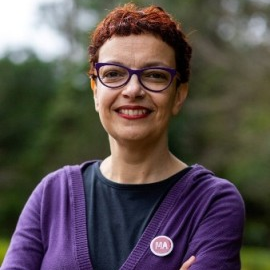Becoming a Gender Equity Democracy: Women and Architecture Practice in Spain and Portugal (1960s–1980s)
A special issue of Arts (ISSN 2076-0752). This special issue belongs to the section "Applied Arts".
Deadline for manuscript submissions: closed (6 December 2019) | Viewed by 53203
Special Issue Editors
Interests: historiography of modern architecture; Spanish late-modern and postmodern architecture; feminist practices in architecture; gender studies in architecture; architecture journals and magazines
2. Department of Civil Engineering and Architecture, University of Beira Interior, 6201-001 Covilhã, Portugal
Interests: history of architecture; Portuguese architecture; gender studies; architecture and cities; dwelling
Special Issue Information
Dear Colleagues,
The fourth feminist wave in which we are living is witnessing the emergence of new research on the history of women who have worked in traditionally male professions. This volume of Arts seeks to constrast the investigations developed by Spanish and Portuguese research centers regarding the history of women in architecture. The aim of this Special Issue is presenting different studies that deal with how women began to practice architecture in Spain and Portugal. Both countries share not only the Iberian Peninsula, but also a political situation that postponed the advent of democracy several decades in comparison with other European countries. They also shared lengthy totalitarian regimes that took their toll on women’s rights, as well as on their possibilities to practice technical professions.
This call for papers seeks for manuscripts that analyze architectural designs of female authorship—designed either individually or in mixed-gender teams—but which do so from a cultural and sociopolitical perspective that allows framing them within the progress of democratic values that allowed women to choose and freely develop the architect profession. This Special Issue welcomes works that relate to those legislative, political, cultural and social changes in Spain and Portugal from the 1960s to the 1980s that have led to women assuming leading roles in the many areas of architectural practice, be it construction, urban planning, urban design, landscape design, restoration, or interior design. Further, this issue of Arts seeks for texts that explore whether female authorship has influenced those designs in any way, be it because they apply a gender-based perspective, or/and because they feature innovations that differ from those of their male colleagues.
Dr. Lucia C. Pérez-Moreno
Dr. Patrícia Santos Pedrosa
Guest Editors
Manuscript Submission Information
Manuscripts should be submitted online at www.mdpi.com by registering and logging in to this website. Once you are registered, click here to go to the submission form. Manuscripts can be submitted until the deadline. All submissions that pass pre-check are peer-reviewed. Accepted papers will be published continuously in the journal (as soon as accepted) and will be listed together on the special issue website. Research articles, review articles as well as short communications are invited. For planned papers, a title and short abstract (about 250 words) can be sent to the Editorial Office for assessment.
Submitted manuscripts should not have been published previously, nor be under consideration for publication elsewhere (except conference proceedings papers). All manuscripts are thoroughly refereed through a double-blind peer-review process. A guide for authors and other relevant information for submission of manuscripts is available on the Instructions for Authors page. Arts is an international peer-reviewed open access monthly journal published by MDPI.
Please visit the Instructions for Authors page before submitting a manuscript. The Article Processing Charge (APC) for publication in this open access journal is 1400 CHF (Swiss Francs). Submitted papers should be well formatted and use good English. Authors may use MDPI's English editing service prior to publication or during author revisions.
Keywords
- women in architecture
- Spanish architecture
- Portuguese architecture
- architecture historiography
- gender equity
- democracy
Benefits of Publishing in a Special Issue
- Ease of navigation: Grouping papers by topic helps scholars navigate broad scope journals more efficiently.
- Greater discoverability: Special Issues support the reach and impact of scientific research. Articles in Special Issues are more discoverable and cited more frequently.
- Expansion of research network: Special Issues facilitate connections among authors, fostering scientific collaborations.
- External promotion: Articles in Special Issues are often promoted through the journal's social media, increasing their visibility.
- Reprint: MDPI Books provides the opportunity to republish successful Special Issues in book format, both online and in print.
Further information on MDPI's Special Issue policies can be found here.





